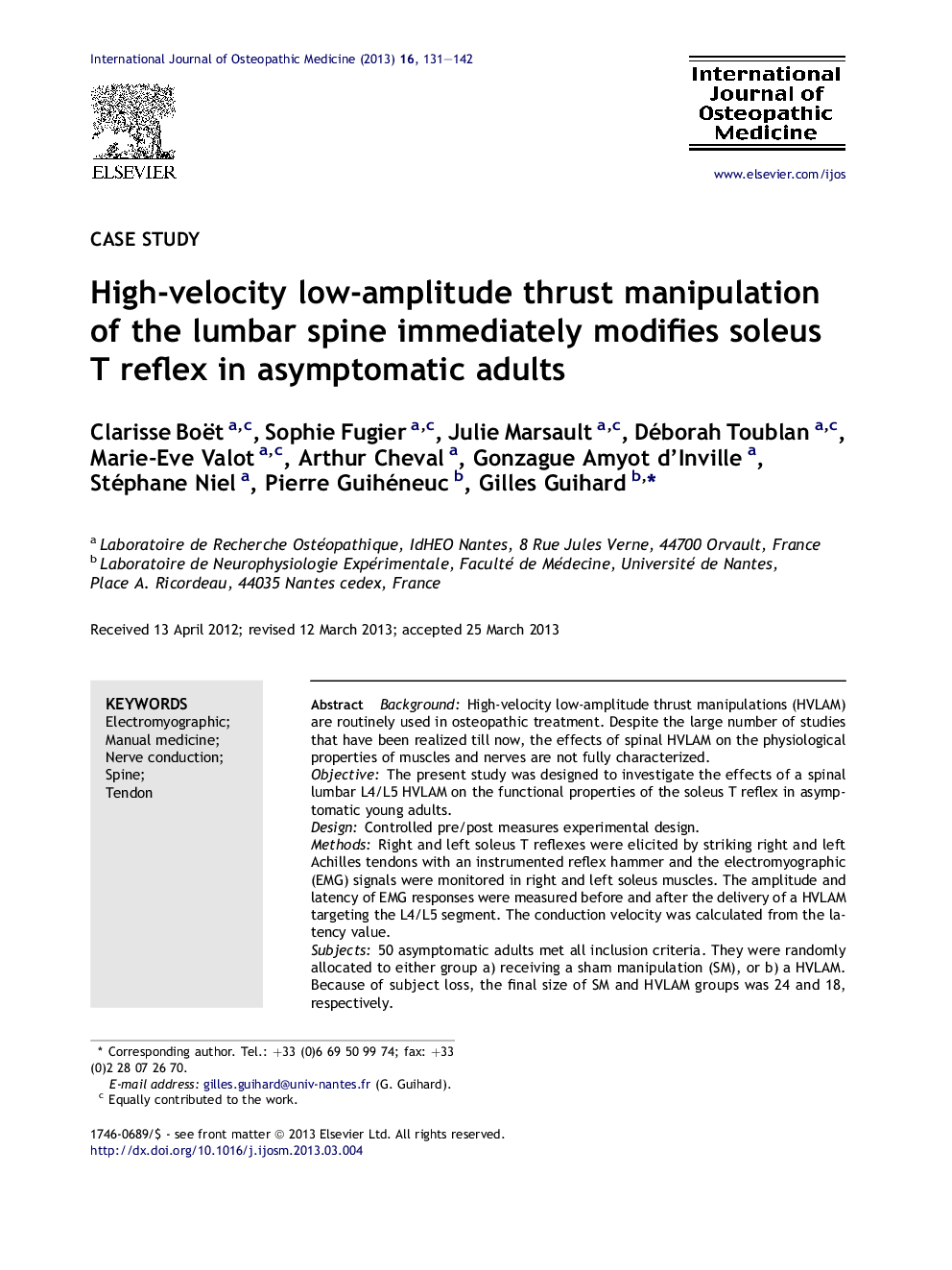| Article ID | Journal | Published Year | Pages | File Type |
|---|---|---|---|---|
| 2618533 | International Journal of Osteopathic Medicine | 2013 | 12 Pages |
BackgroundHigh-velocity low-amplitude thrust manipulations (HVLAM) are routinely used in osteopathic treatment. Despite the large number of studies that have been realized till now, the effects of spinal HVLAM on the physiological properties of muscles and nerves are not fully characterized.ObjectiveThe present study was designed to investigate the effects of a spinal lumbar L4/L5 HVLAM on the functional properties of the soleus T reflex in asymptomatic young adults.DesignControlled pre/post measures experimental design.MethodsRight and left soleus T reflexes were elicited by striking right and left Achilles tendons with an instrumented reflex hammer and the electromyographic (EMG) signals were monitored in right and left soleus muscles. The amplitude and latency of EMG responses were measured before and after the delivery of a HVLAM targeting the L4/L5 segment. The conduction velocity was calculated from the latency value.Subjects50 asymptomatic adults met all inclusion criteria. They were randomly allocated to either group a) receiving a sham manipulation (SM), or b) a HVLAM. Because of subject loss, the final size of SM and HVLAM groups was 24 and 18, respectively.ResultsOur data show that the conduction velocity, but not the amplitude of the T reflex, is significantly increased by HVLAM in both soleus muscles with small to medium effect size. SM neither changes the amplitude nor modifies the conduction velocity.ConclusionOur data show that a lumbar L4/L5 HVLAM modifies the electrophysiological properties of the soleus T reflex.
